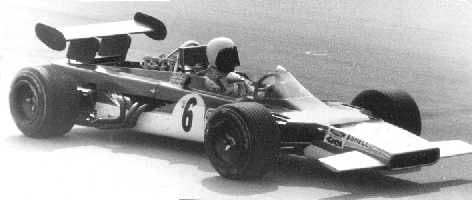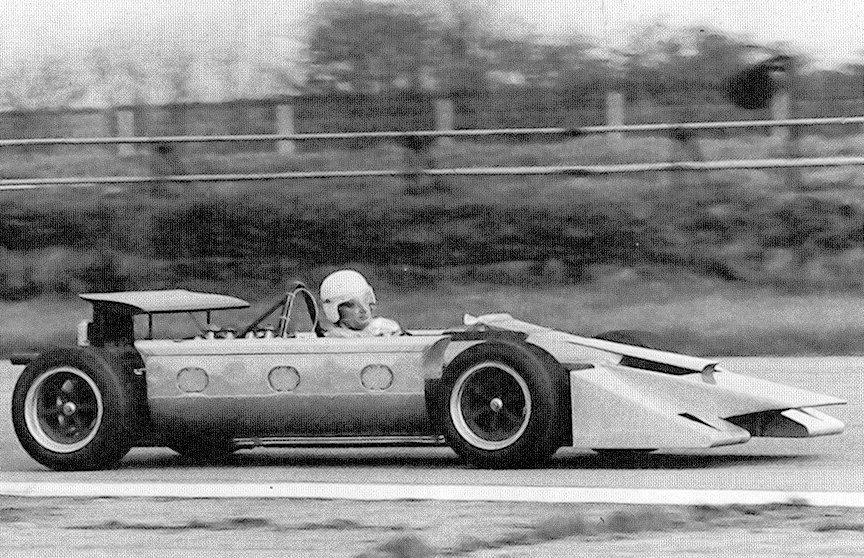by Brian Goulding – – –
Many motor manufacturers use four-wheel drive on their powerful (and not so powerful) road cars as a method of ensuring a more efficient transfer of drive to the ground, especially in wet and slippery conditions. It is an obvious advantage on the road, but it begs the question: why is four-wheel drive rarely used in motor racing?
From its first appearance in rallying in 1981, the Audi Quattro dominated the World Rally Championship. The combination of a powerful, but not heavy, turbocharged five-cylinder engine and a sophisticated four-wheel drive transmission set new standards of performance which no two-wheel drive car (front or rear) could equal. Ever since then four four-wheel drive has been a prerequisite for success in the world of rallying.

The first four-wheel drive car to compete in a modern Grand Prix (post 1950 and the beginning of the world championship) was the Ferguson P99. Built by Ferguson Research, the P99 (named from its research project number) was raced on behalf of the company by the Rob Walker Racing Team and used both 1.5-litre and 2.5-litre Climax engines.
It remains the most famous example of its type as a result of its twin claims to fame: the first AWD car to win a Formula One event, and the last front-engine car to win a Formula One race: Stirling Moss won the non-championship 1961 Oulton Park Gold Cup on a damp track. With a 2.5-litre Coventry Climax fitted, the car came to Australia to compete in the 1963 Tasman Series. The best result was a second place at Lakeside, Queensland. Worth remembering, too, that in 1964 Peter Westbury won the British Hillclimb Championship driving the same car.
After Ferguson withdrew from racing, the technology was picked up by BRM for the experimental 1964 P67 Formula One car. The P67 was entered for the 1964 British Grand Prix with Richard Attwood driving, but after qualifying last, the car was withdrawn from the race. BRM then mothballed the 4WD programme to concentrate on the complicated H16 engine for 1966’s new 3-litre F1 car, although the engine was designed with room for a second driveshaft should 4WD become the way to go.
Four-wheel drive lay dormant in Formula One until a flurry of activity in 1969. When the 3-litre formula was introduced, constructors suddenly found themselves with more power than the tyres could handle, especially on a wet track. For the 1969 season, four constructors built 4WD Formula One cars; however, advances in tyre technology and aerodynamics meant they were soon redundant. And it seemed every driver who tried one hated it.
Lotus 63 – 1969

After high-level wings were banned in early 1969, the Lotus 63 was developed as a possible answer to the problem of decreased grip. It had seven GP starts with a best result of tenth place.
Matra MS84 – 1969

Jean-Pierre Beltoise scored a respectable ninth place in the 1969 British GP. After that race, the front differential was disconnected and the car became the overweight MS80. The drivers still complained that the four-wheel drive made the car undrivable.
McLaren M9A – 1969
Derek Bell gave the car its Formula One debut at the 1969 British GP. At turn one it ploughed straight ahead and was out of the race. That was the end of its racing career.
Cosworth F1 – 1969

The makers of the highly successful racing engine built a complete 4WD car from scratch for the 1969 season. Maybe it was a weight consideration, but they developed a special magnesium cylinder block for the car. It suffered from severe understeer in testing and was never raced.
Lotus 56B Turbine – 1971
This car was a revamp of the Lotus Indy turbine car which so nearly won the 1968 Indianapolis 500. Dave Walker started twenty-second in the wet Dutch GP and quickly worked his way up to tenth place. He crashed out of the race, much to the annoyance of Lotus boss Colin Chapman, who thought he could have won. Emerson Fittipaldi drove the car to eighth place in the 1971 Italian GP – the best result for a 4WD car in a championship GP.
In later years March fiddled with four driven wheels at the rear of its 761 chassis. They called the resulting car the 2-4-0. As in railway terminology there were two wheels ahead of the driven wheels (2), four driven wheels (4) and zero wheels (0) behind the driven wheels. It was never raced but it had success in the British Hillclimb Championship. Williams followed the March idea with their FW08D model and it was the potential of this car that caused the FIA to ban four-wheel drive in 1982.
The Ferguson P99 was not the first Grand Prix car with four-wheel drive but that is a story for next time.

